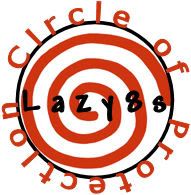midnightguy
Member
Rave Racer for PowerVR Series 1 (PCX1, PCX2) - 1996 - unreleased


now lets compare estimated performance of Arcade, Playstation and PowerVR1 Ridge Racers
Arcade System22 board (Ridge 1993 - Ridge 2 1994 - Rave 1995)
240,000 triangles/sec with texture mapping, z-buffer, fog, perspective correction, gouraud shading, lighting. (no texture filtering) games run at 60 FPS, 640 x 480 interlaced. Rave Racer has higher res textures
Playstation Ridge Racer 1994: approx 90,000 textured, shaded polygons. 30 FPS. approx 320 x 220 interlaced. ~ roughly about 1/4 to 1/3 of the System22 arcade graphics
Playstation Ridge Racer High Spec / Turbo 1998 - improved polygon models, better texture mapping, shading and lighting @ 60 FPS - therefore, about 180,000 textured, shaded, lit polygons ~ roughly about 2/3 to 3/4 of the System22 arcade Ridge Racer graphics
PowerVR1 Rave Racer 1996: roughly 200,000 polygons sec at most, probably less than that though. 30 FPS. 640 x 480. gourad shading, high-res textures, some effects not in arcade to make up for lower polygon count. ~roughly about 1/2 of the System22 arcade Rave Racer graphics (remeber its half the framerate which cuts polygon count)
Ridge Racer HiSpec / Turbo is the most impressive of the home versions, because it is pushing Playstation (which is weaker than PowerVR1 + Pentium 133) harder than the PowerVR Rave Racer conversion. no doubt, if the PowerVR1 was pushed as hard as the Playstation was in 1998 RR HiSpec, the Rave Racer conversion could've been 60 FPS and even more impressive, but that did not happen, since Rave Racer PowerVR1 was first or second generation PowerVR1 software and an improve version years later does not exist.


now lets compare estimated performance of Arcade, Playstation and PowerVR1 Ridge Racers
Arcade System22 board (Ridge 1993 - Ridge 2 1994 - Rave 1995)
240,000 triangles/sec with texture mapping, z-buffer, fog, perspective correction, gouraud shading, lighting. (no texture filtering) games run at 60 FPS, 640 x 480 interlaced. Rave Racer has higher res textures
Playstation Ridge Racer 1994: approx 90,000 textured, shaded polygons. 30 FPS. approx 320 x 220 interlaced. ~ roughly about 1/4 to 1/3 of the System22 arcade graphics
Playstation Ridge Racer High Spec / Turbo 1998 - improved polygon models, better texture mapping, shading and lighting @ 60 FPS - therefore, about 180,000 textured, shaded, lit polygons ~ roughly about 2/3 to 3/4 of the System22 arcade Ridge Racer graphics
PowerVR1 Rave Racer 1996: roughly 200,000 polygons sec at most, probably less than that though. 30 FPS. 640 x 480. gourad shading, high-res textures, some effects not in arcade to make up for lower polygon count. ~roughly about 1/2 of the System22 arcade Rave Racer graphics (remeber its half the framerate which cuts polygon count)
Ridge Racer HiSpec / Turbo is the most impressive of the home versions, because it is pushing Playstation (which is weaker than PowerVR1 + Pentium 133) harder than the PowerVR Rave Racer conversion. no doubt, if the PowerVR1 was pushed as hard as the Playstation was in 1998 RR HiSpec, the Rave Racer conversion could've been 60 FPS and even more impressive, but that did not happen, since Rave Racer PowerVR1 was first or second generation PowerVR1 software and an improve version years later does not exist.

